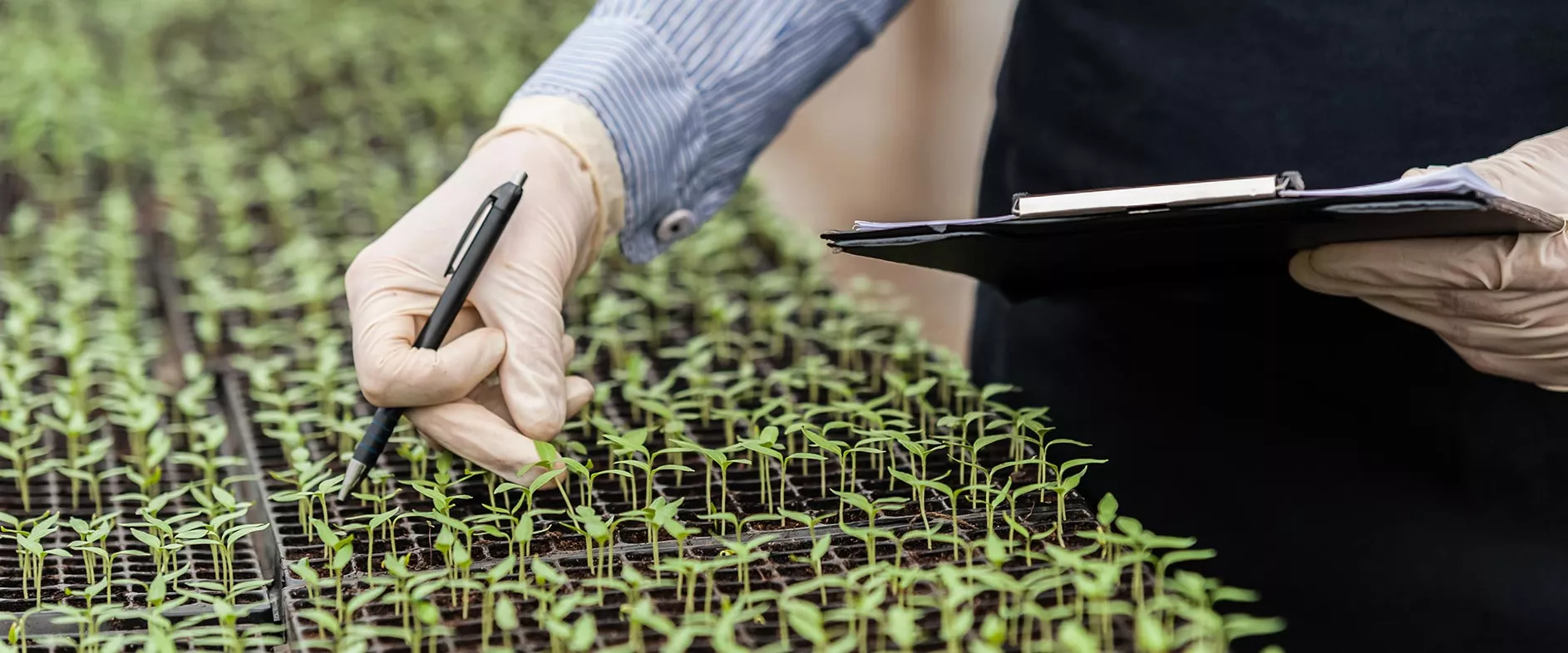
“Seeding, not weeding”
To control vegetation on our railway tracks we’re testing several innovative alternatives to conventional weedkillers. These include a pioneering technique known as “targeted sowing”. Learn more with Claire Couvrechef, Vegetation Control Specialist at SNCF Réseau, Paris Region.
A pioneering alternative
Trackside weeds must be kept in hand to ensure trains run safely and on time. Nowadays, weed control methods include new, more eco-friendly options. As well as eco-pasturing—where grazing livestock keep the vegetation down—we’re also testing targeted sowing. This technique consists of sowing special mixtures of seeds that meet the our rail and personnel safety requirements. Learn more about our experiment—the only one of its kind in France.
What exactly is “targeted sowing”?
It’s one of the methods we’re exploring to prevent weed and shrub overgrowth around our oldest service tracks. Vegetation is particularly prolific in these areas because, over time, the initial layer of ballast1 degrades into sandy soil which is very hospitable terrain for plant growth. Our aim is to encourage the growth of certain plants over others and to sow varieties that can compete with local weeds. It’s a clever way of controlling vegetation on low-frequency service tracks.
And why is it used for these tracks specifically?
Because eco-pasturing—using grazing animals for natural trackside mowing—isn’t feasible here. We had to find an alternative. Service tracks are like the backstage of the main network—they’re used for several purposes, including shunting, stabling, marshalling and maintenance operations. These tracks play a crucial role. So, for safety reasons, trackside vegetation must be kept under control.
Why are weeds and unwanted vegetation an issue?
There are several reasons. First, they can affect track geometry: misaligned, uneven tracks can cause train accidents and even derailments. Overgrown vegetation also makes it difficult to check out the state of track components. During inspections, weed growth can obstruct visibility and increase the risk of trips and falls.
How did this project get off the ground?
We’d been pondering a change of strategy for 5 years. Instead of using weedkillers, we thought, why not plant vegetation that meets our security standards? How? By sowing our own special selection of seeds.
Was that easy to do?
First, we conducted meticulous research. Anne Petit, from our Industrial & Engineering Division’s Sustainable Development department, commissioned a research thesis—that I jointly supervise—to explore applying the solution at both local and national levels. We chose the marshalling yard at Villeneuve-Saint-Georges, east of Paris, for most of our experiments. Our researcher, Muriel Ehmig, conducted an in-depth study of plant varieties. Before that, we consulted the employees working on these sites to draw up plant selection criteria.
What are the criteria?
For safety, plants must not grow more than 10 cm high. They mustn’t trip up workers or obstruct visibility and prevent them from seeing track defects. The plants we chose must also survive without watering, be tough enough to endure regular trampling, and withstand low temperatures, wind and extreme weather conditions. Those were the main prerequisites for selection.

500
plant species researched

14
plant species selected

4
different seed mixes tested
How are your selected seed mixes sown?
They can’t be sown like a lawn; it’s more complex. We had to use hydromulching—a technique that enables rapid sowing across large areas with minimal preparation. Basically, the seeds are mixed in a truckbed with water and mulch—a blend of cellulose, wood fibre, and organic matter. This mixture is then sprayed onto the track and trackside area. With this technique, plants germinate better and outgrow the unwanted weeds, gradually smothering them.
Have you tested this method at other railway sites?
The first targeted sowing at Villeneuve-Saint-Georges took place in April 2019. We then sowed our seeds at a site in Burgundy. We’re now planning to repeat the experiment at about 5 or 6 other sites, including one on the Atlantic high-speed line.
Is the long-term aim to use targeted sowing nation-wide?
Yes, if the results are conclusive. One-third of service tracks across France could benefit from this technique, which is the first of its kind in Europe. Winning the 2019 SNCF Trophy2 lent us credibility. Until then, people often challenged this method, saying it wasn’t technical or sophisticated enough, but it is. We want to create efficient, tried-and-tested seed mixes so targeted that sowing becomes a standard maintenance technique. This way, we can regain control and manage weeds on our properties, without relying on a single chemical molecule.
Targeted sowing